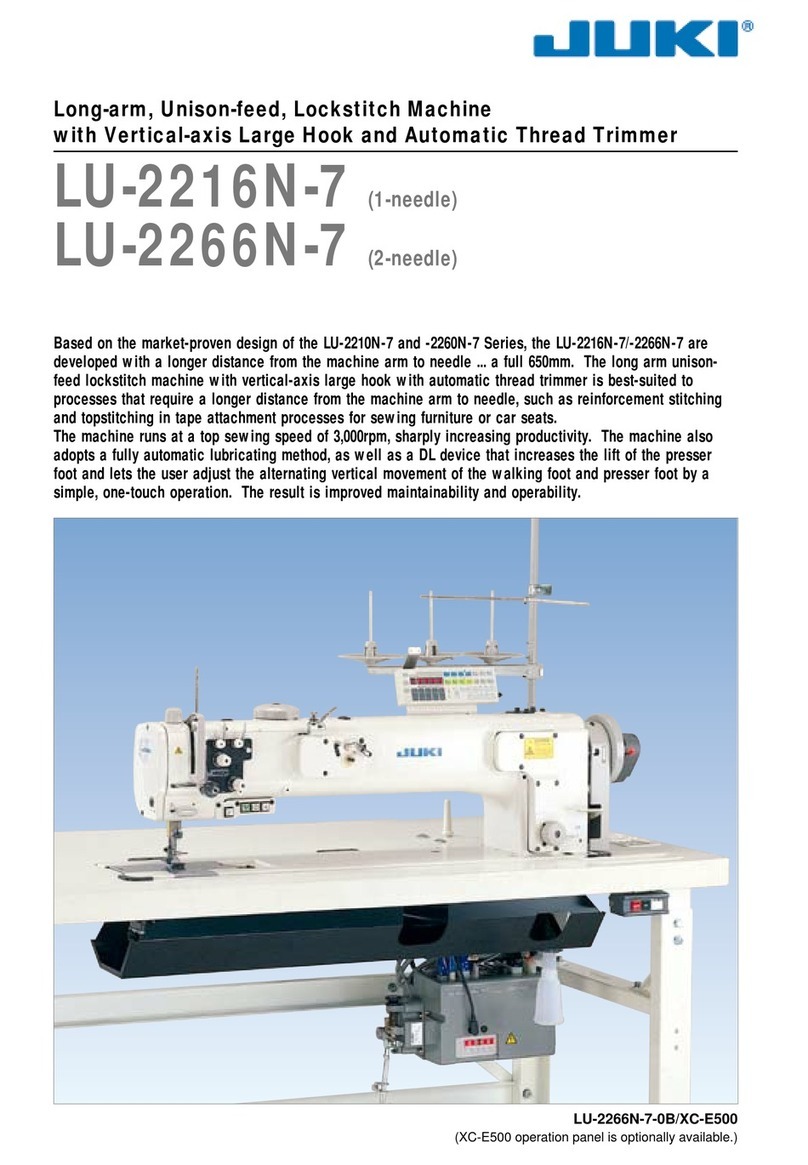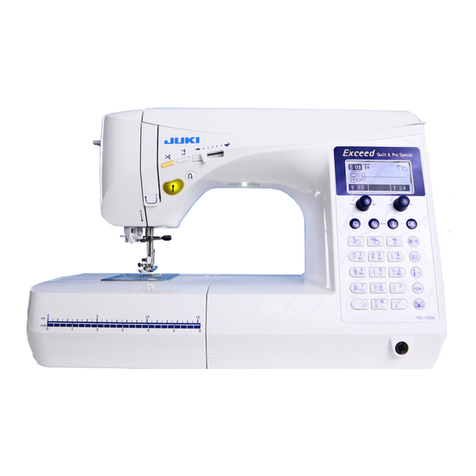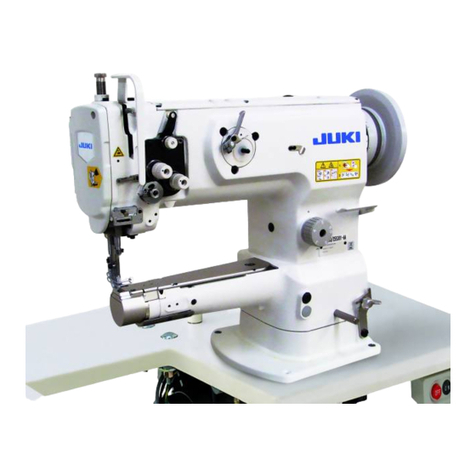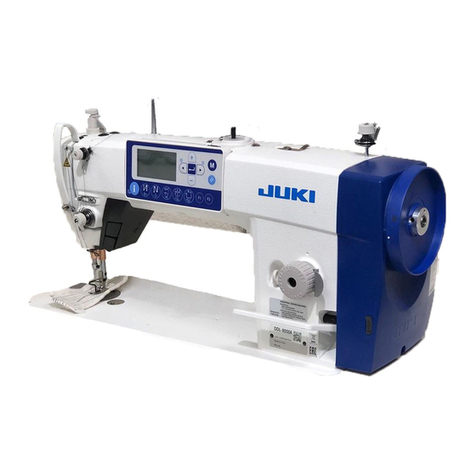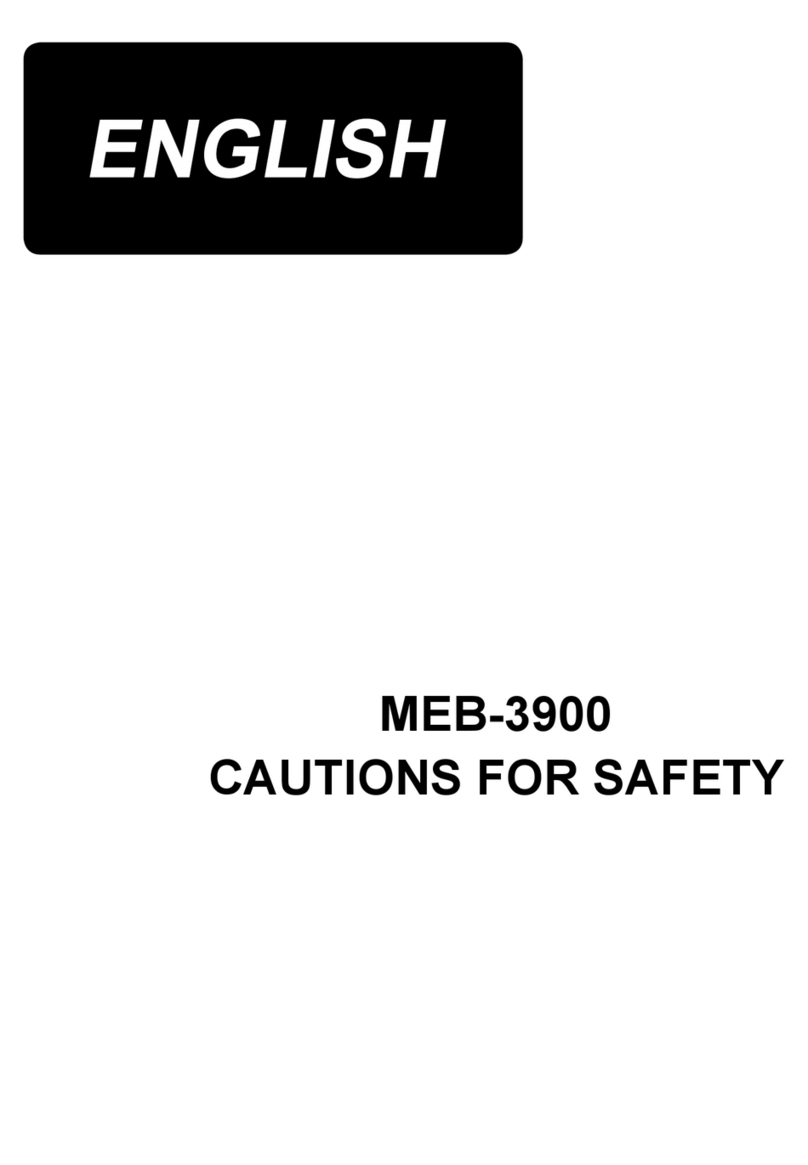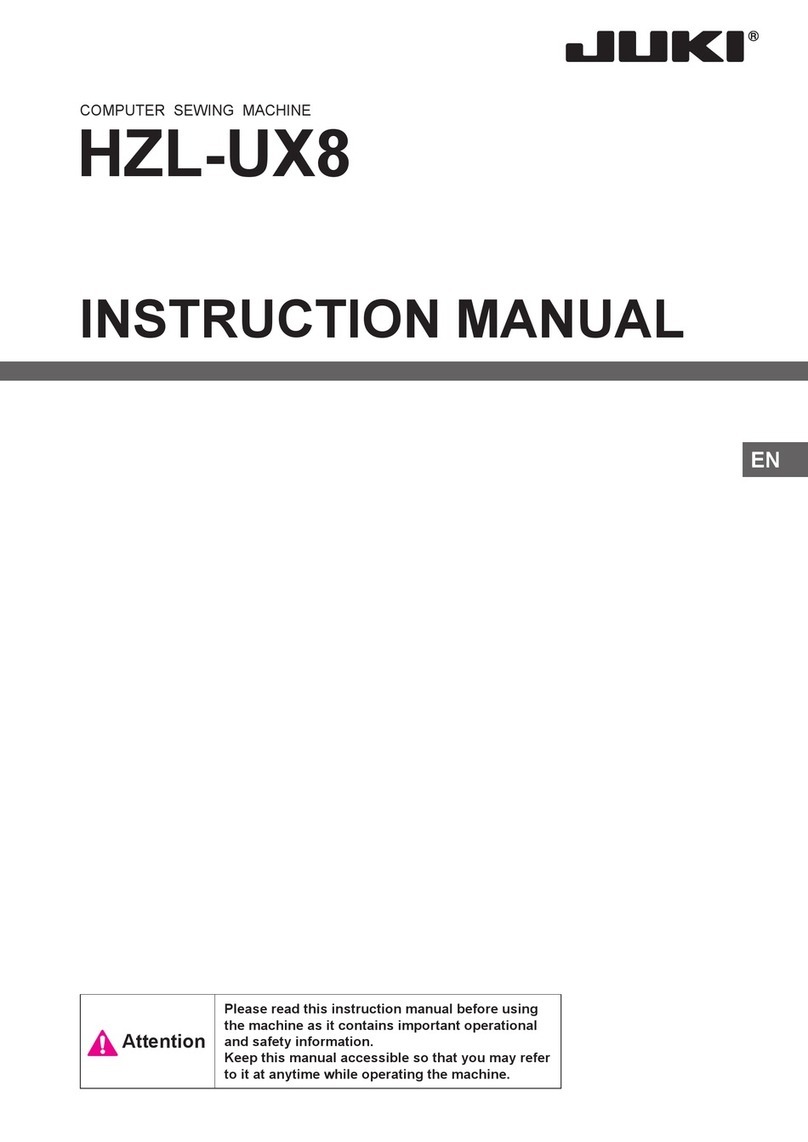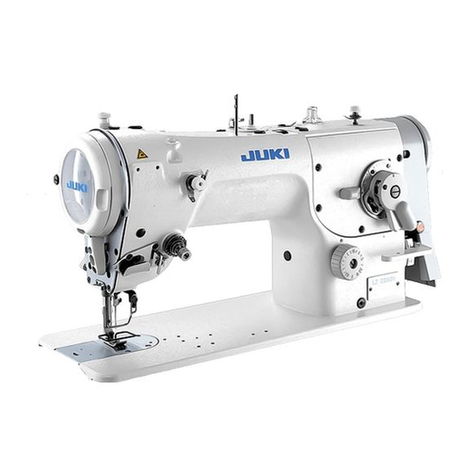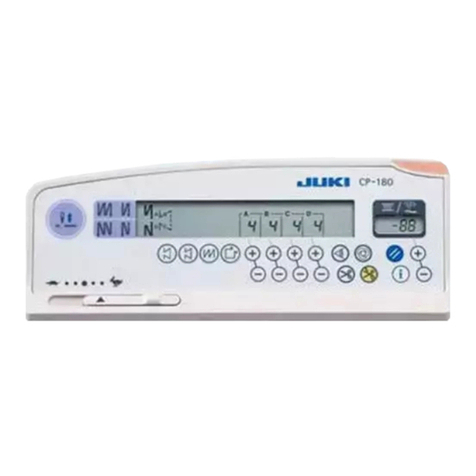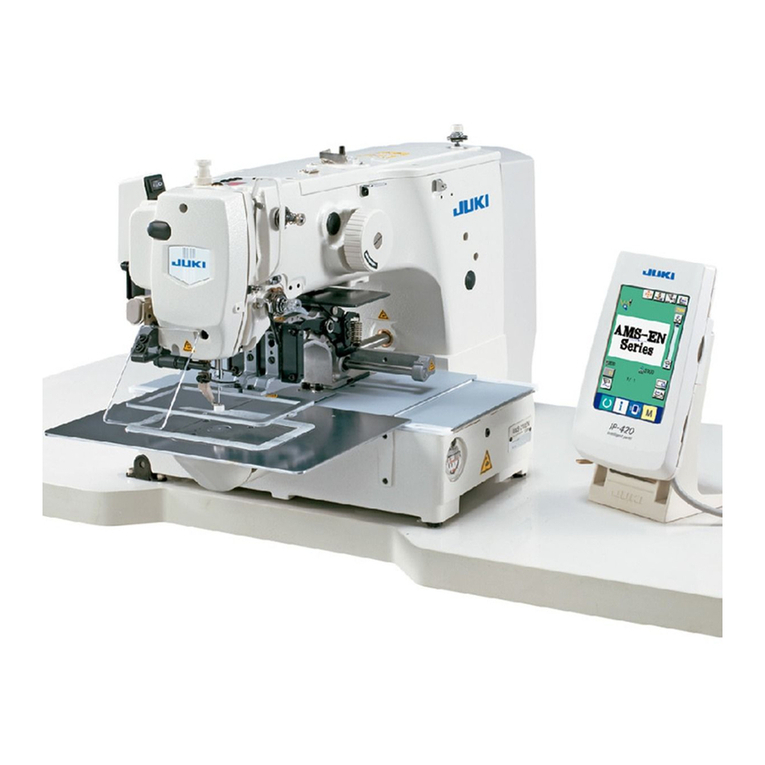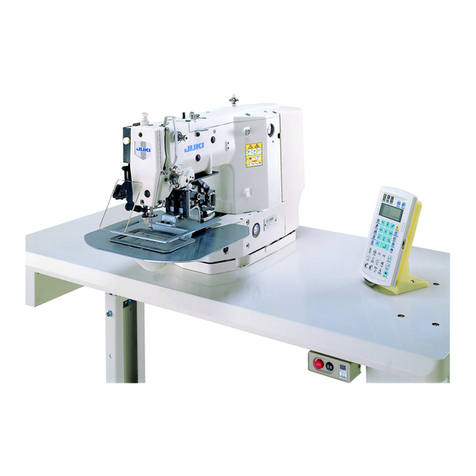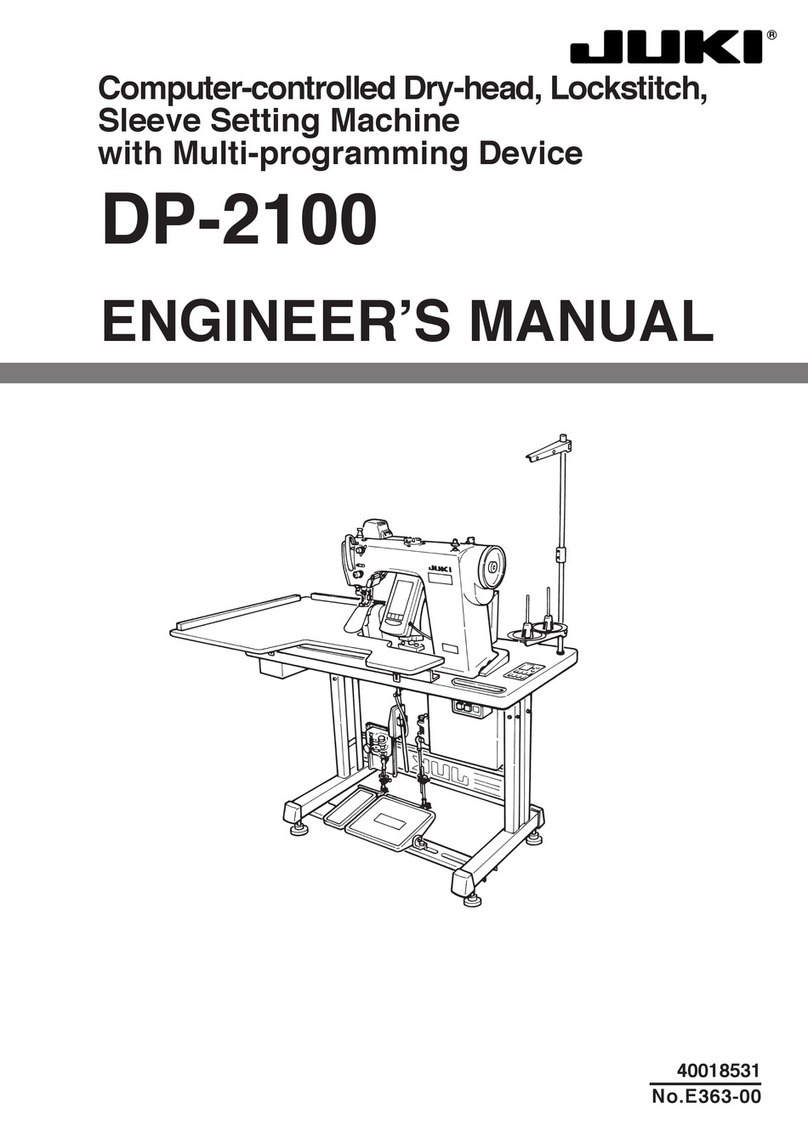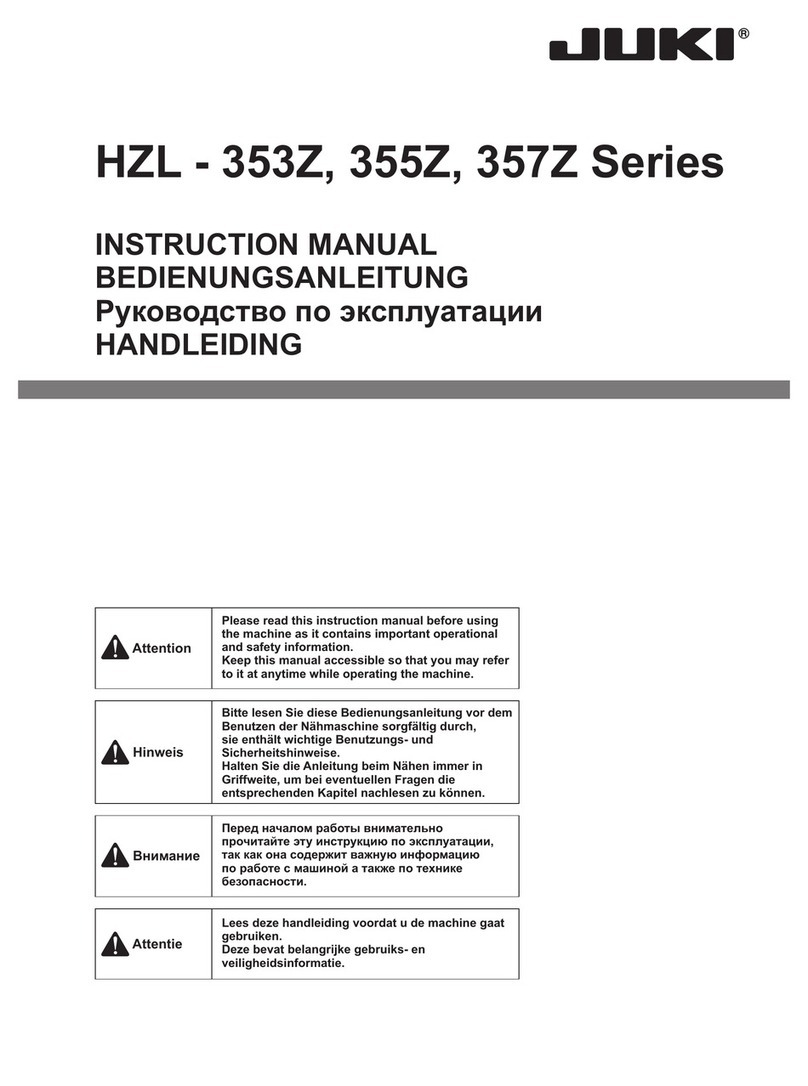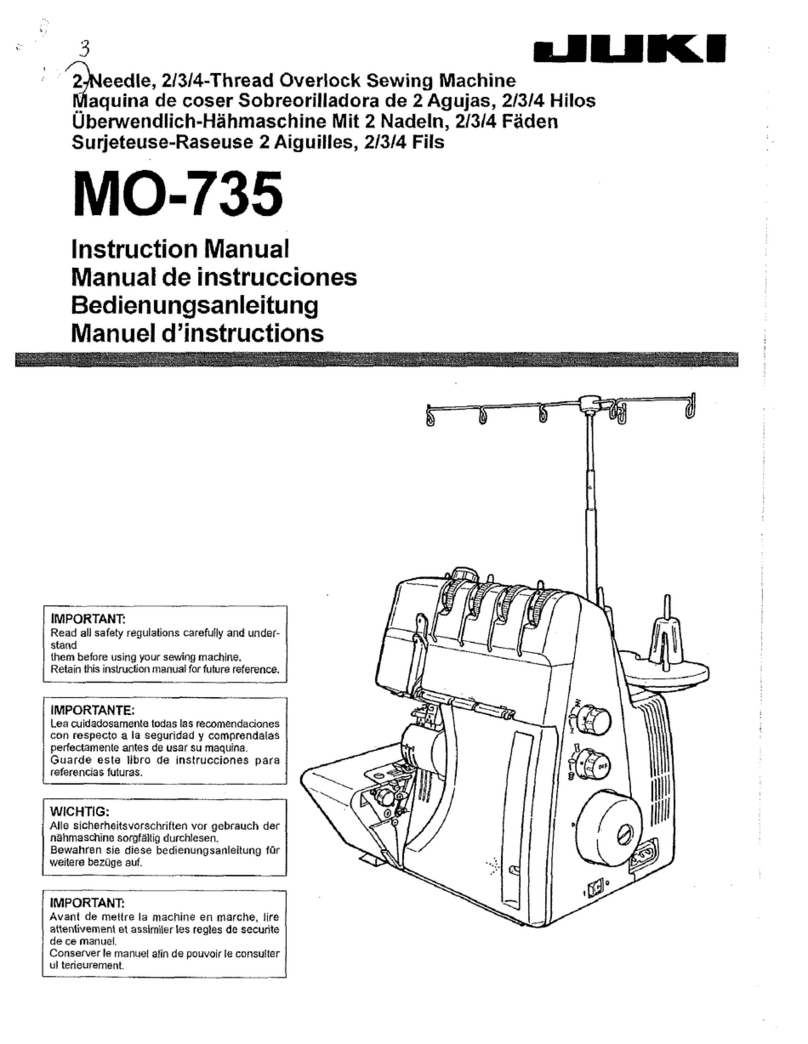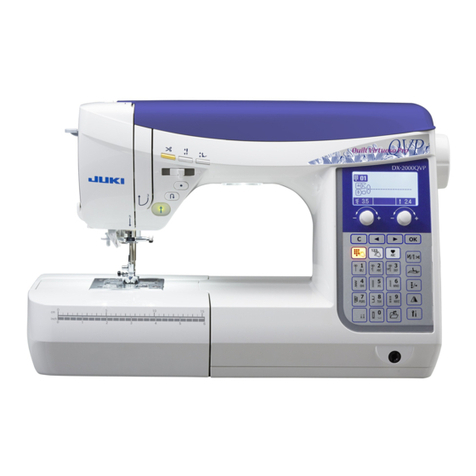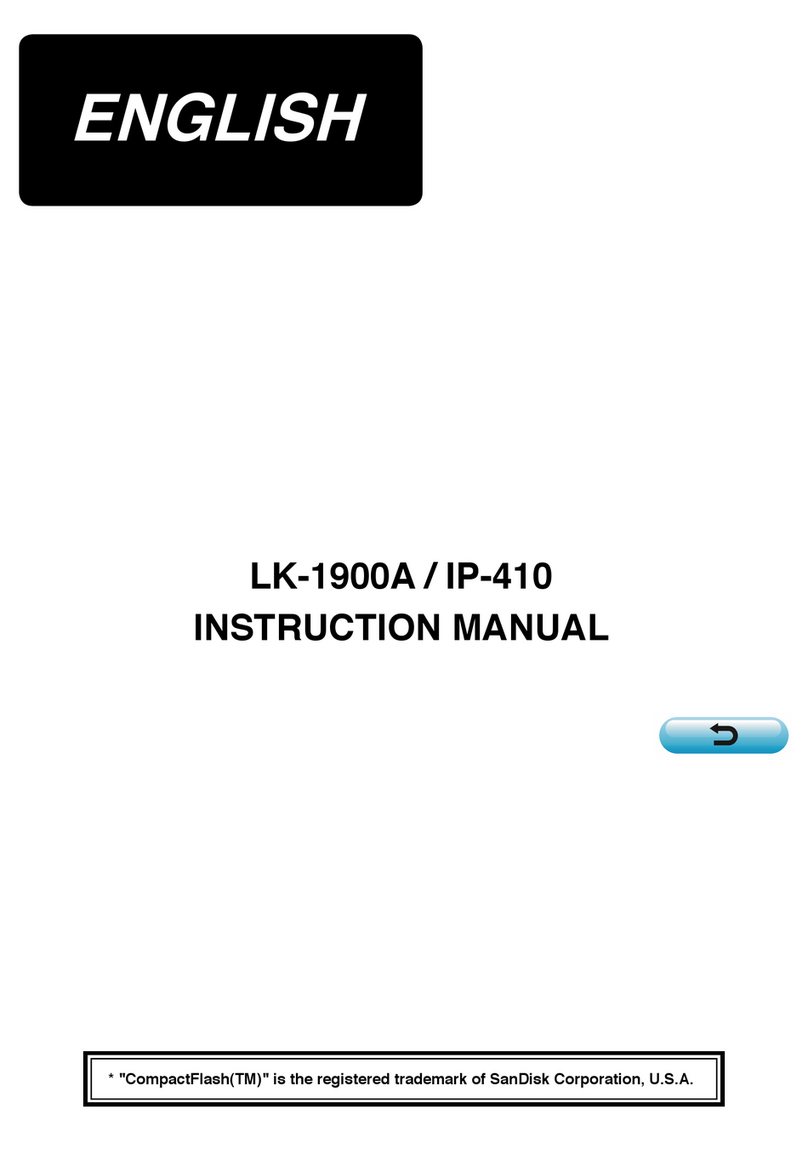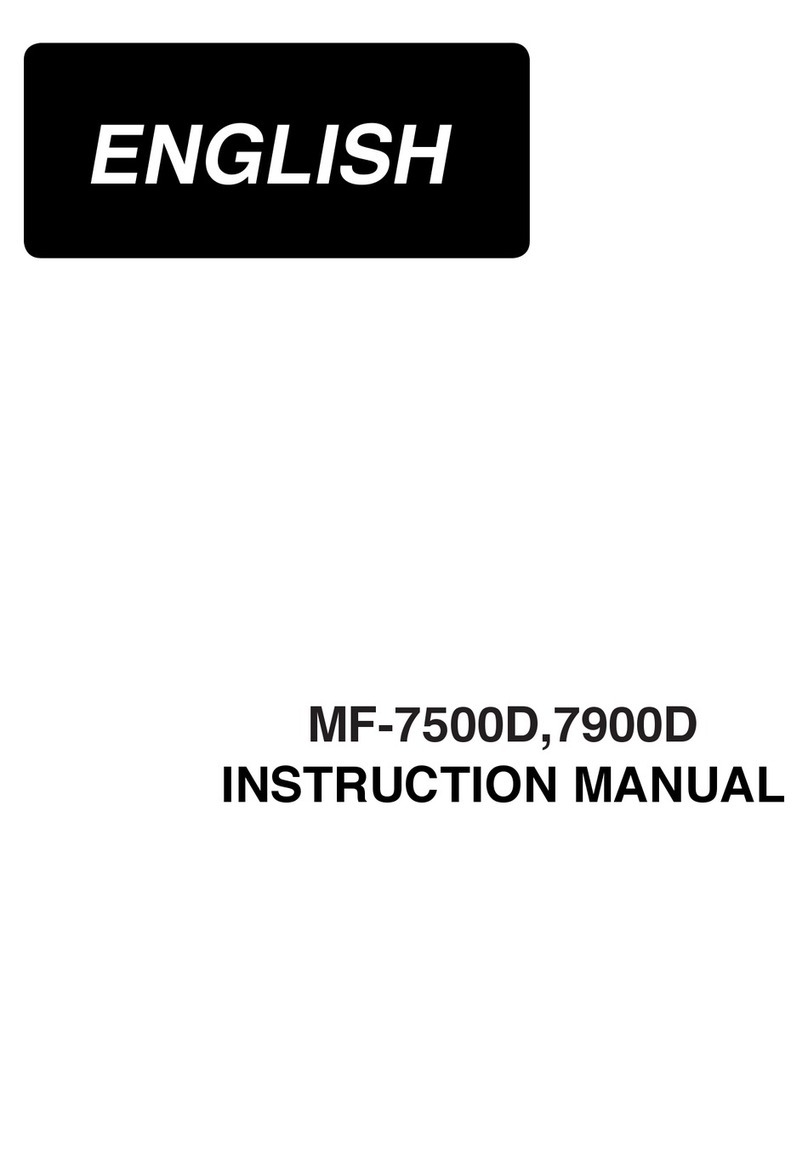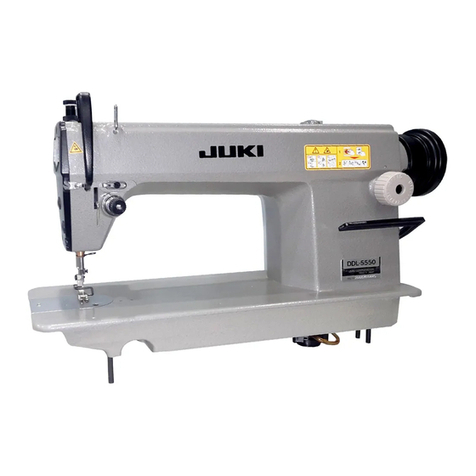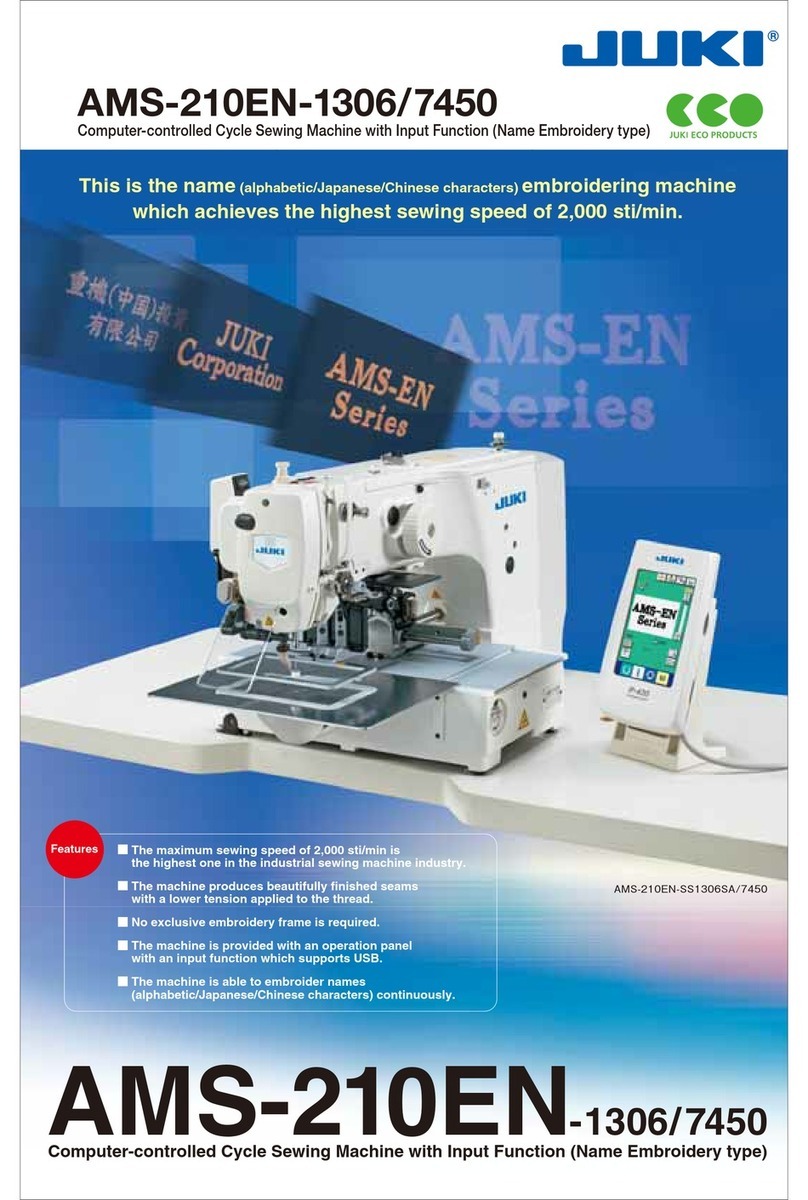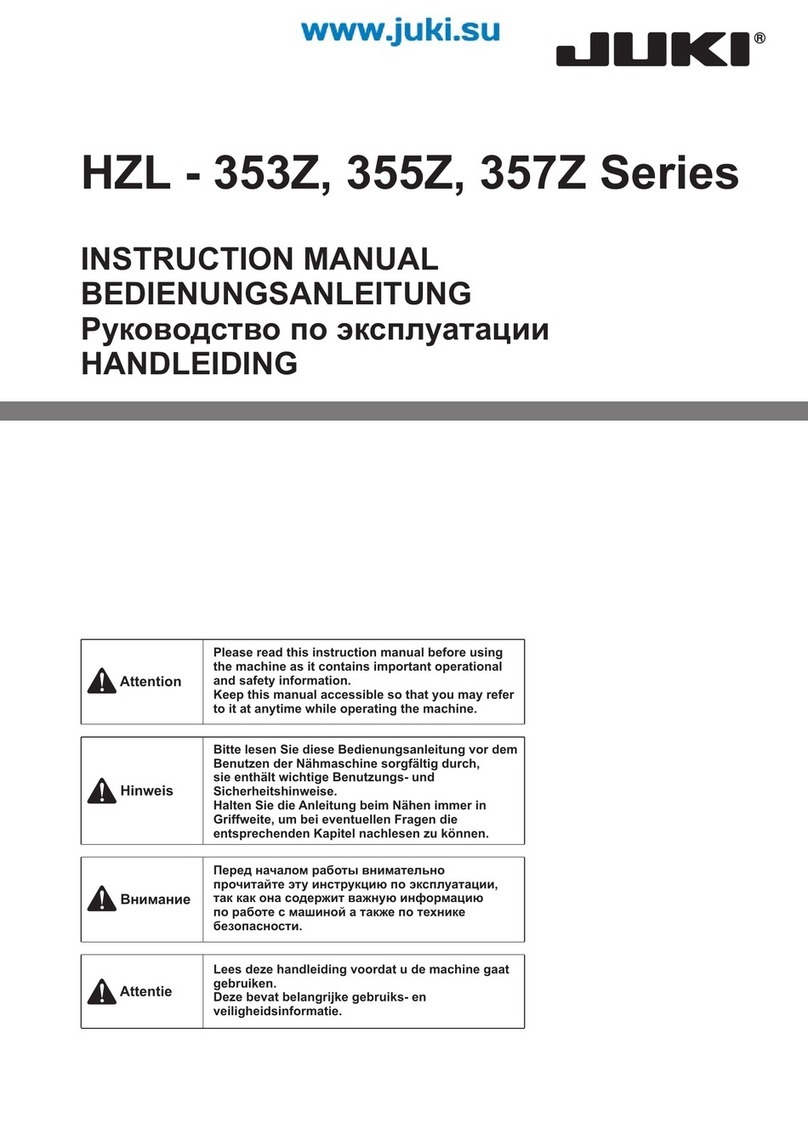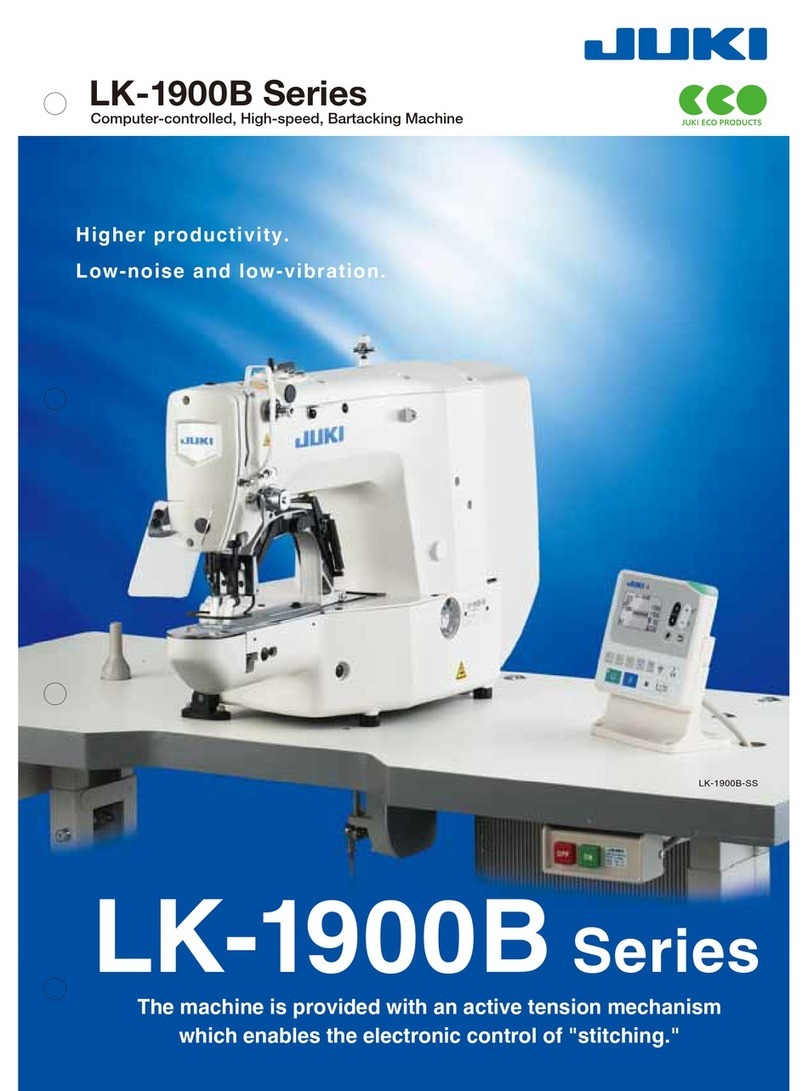4
TABLE OF CONTENTS
Machine identication ......................................................... 5 - 8
Setting up your machine .......................................................... 9
Foot controller, Power switch
Accessories ........................................................................... 10
Spool pins .............................................................................. 11
Winding the bobbin ................................................................ 12
Threading the bobbin thread ................................................. 13
Threading the top thread ...................................................... 14
Using automatic needle threader ........................................... 15
Picking up bobbin thread ....................................................... 16
Changing presser foot ........................................................... 17
Converting to free-arm sewing .............................................. 18
Machine setting chart .................................................... 19 - 21
Straight stitch .................................................................. 22 - 29
Reverse stitch lever .......................................................... 24
Sewing on heavy fabric ..................................................... 25
Adjusting straight stitch thread tension .............................. 26
Needle, thread and fabric chart .................................. 27 - 28
Changing the needle ......................................................... 29
Zigzag stitching, Satin stitch ................................................. 30
Three-point zigzag ................................................................. 31
Blind stitch ............................................................................. 32
Faggoting ............................................................................... 33
Shell stitch ............................................................................. 34
Stretch stitches ............................................................... 35 - 37
Triple straight stitch, Ric-rac stitch, Feather stitch ............. 36
Overlock stitch, Herringbone stitch .................................... 37
Decorative embroidery designs ............................................. 38
Buttonhole sewing .......................................................... 39 - 41
Procedure .......................................................................... 40
Corded buttonholes, Adjusting stitch length (density) ...... 41
Caring for your machine ................................................. 42 - 43
Cleaning the feed dogs and shuttle area
Cleaning the sewing machine and foot controller
Check chart for performance problems .......................... 44 - 45
CONTENIDO
Identicación de la máquina ............................................... 5 - 8
Preparación de la máquina ...................................................... 9
Control por pedal, Interruptor corriente/luz
Accesorios ............................................................................. 10
Spool pins .............................................................................. 11
Devanado de la canilla ......................................................... 12
Enhebrado del hilo de la canilla ............................................ 13
Enhebrado del hilo superior .................................................. 14
Empleo del enhebrador aguja ............................................... 15
Recogida del hilo de la canilla ............................................... 16
Cambio del pie prensatelas .................................................. 17
Conversión para la costura con brazo .................................. 18
Esquema de ajuste de la máquina ................................. 19 - 21
Puntada recta ................................................................ 22 - 29
Palanca de la puntada de retroceso .................................. 24
Cosiendo materiales pesados ........................................... 25
Ajuste de la tensión del hilo superior ................................. 26
Tabla de hilo, aguja y material .................................... 27 - 28
Cambio de la aguja ........................................................... 29
Punto de zigzag, Puntada de relleno .................................... 30
Zig-zag de tres puntadas ....................................................... 31
Puntada invisible ................................................................... 32
Fagoting (Diente de rata) ...................................................... 33
Puntada de lenceria .............................................................. 34
Puntadas elasticas ......................................................... 35 - 37
Puntada recta triple, Puntada zig-zag a dos agujas,
Puntada pluma ............................................................................... 36
Puntada overlock, Puntada espina .................................... 37
Diseños de bordados decorativos ......................................... 38
Cambiar el pie prensatelas al pie prensatelas de ojales 39 - 41
Procedimiento ................................................................... 40
Ojales con cordón, Ajuste de la longitud puntada (densidad) ... 41
Cuide su maquina ........................................................... 42 - 43
Limpiar el area del transportador y la lanzadera
Limpieza de la máquina de coser y del regulador del pie
Cuadro de examen para los problemas de ejecucion .... 44 - 45
Dimensiones: 398 mm × 198 mm × 280 mm
Peso del equipo: 5,9 kg
Voltaje nominal: 120V, 220 - 230 V ~
Frecuencia nominal: 50 / 60 Hz
Consumo nominal: 60W
Use en ambiente normal: Temperatura normal
Nivel de ruido acústico: menos de 72db(A)
Dimensions: 398 mm × 198 mm × 280 mm
Mass of the equipment: 5.9 kg
Rated Voltage: 120V, 220 - 230 V ~
Rated Frequency: 50 / 60 Hz
Rated input: 60W
Using ambient temperature: Normal temperature
Acoustic noise level: less than 72db(A)
СОДЕРЖАНИЕ
Детали машины .................................................................. 5 - 8
Подготовка машины к работе .................................................. 9
Ножная педаль управления,
Переключатель питания/освещения
Принадлежности ..................................................................... 10
Катушечный стержень для верхней нити ............................. 11
Намотка шпульки ................................................................... 12
Заправка нижней нитки .......................................................... 13
Заправка верхней нити ........................................................... 14
Как пользоваться устройством вдевания нитки в иглу ........ 15
Подьем нижней нити ............................................................. 16
Смена прижимной лапки ........................................................ 17
Свободный пошив рукава ...................................................... 18
Схема настройки машины ............................................... 19 - 21
Прямые строчки ...............................................................22 - 29
Рычаг реверса строчки ...................................................... 24
Шитье на тежелой ткани .................................................... 25
Регулировка натяжения нити в прямой строчке ............... 26
Таблица игл, ниток и материалов .............................. 27 - 28
Замена иглы ........................................................................ 29
Зигзагообразная строчка ........................................................ 30
Атласная строчка ................................................................ 30
Трехшаговый зигзаг ................................................................ 31
Потайная строчка ................................................................... 32
Перистая строчка .................................................................... 33
Бельевая строчка ................................................................... 34
Эластичные строчки ........................................................ 35 - 37
Тройная стачивающая строчка .......................................... 36
Усиленный тройной зигзаг, Перьевая строчка ................. 36
Обметочная строчка, Строчка «рыбий хребет» .............. 37
Фасонные строчки для вышивания ....................................... 38
Вышивание пуговичных петель ...................................... 39 - 41
Процедура .......................................................................... 40
Шнурковые пуговичные петли .......................................... 41
Регулировка длины (плотности) и ширины стежка .......... 41
Уход за машиной ............................................................. 42 - 43
Чистка транспортера и места установки челнока
Очищать швейную машину и регулятор ноги
Руководство по устранению неисправностей ............... 44 - 45
Размеры: 398 мм х 198 мм х 280 мм
Масса: 5,9 кг
Рабочее напряжение: 120 В, 220 - 230 В ~
Частота: 50 Гц
Потребляемая мощность: 60 Вт
Тепература использования: Нормальная
температура.
Уровень шума: менее 72 дБА
